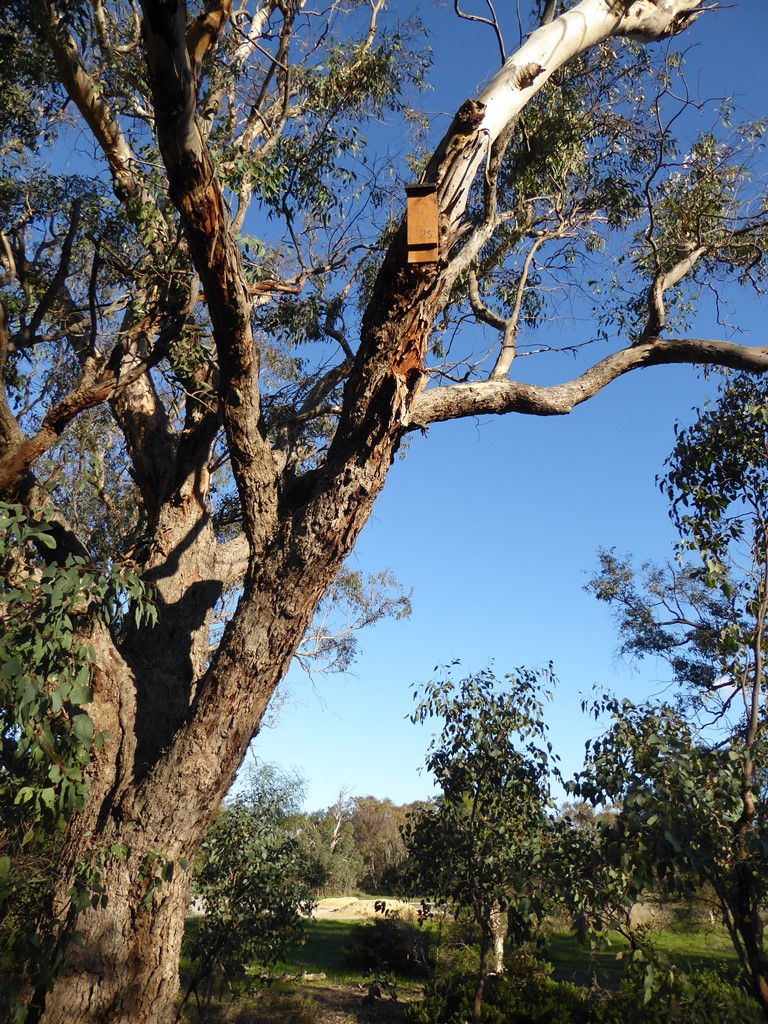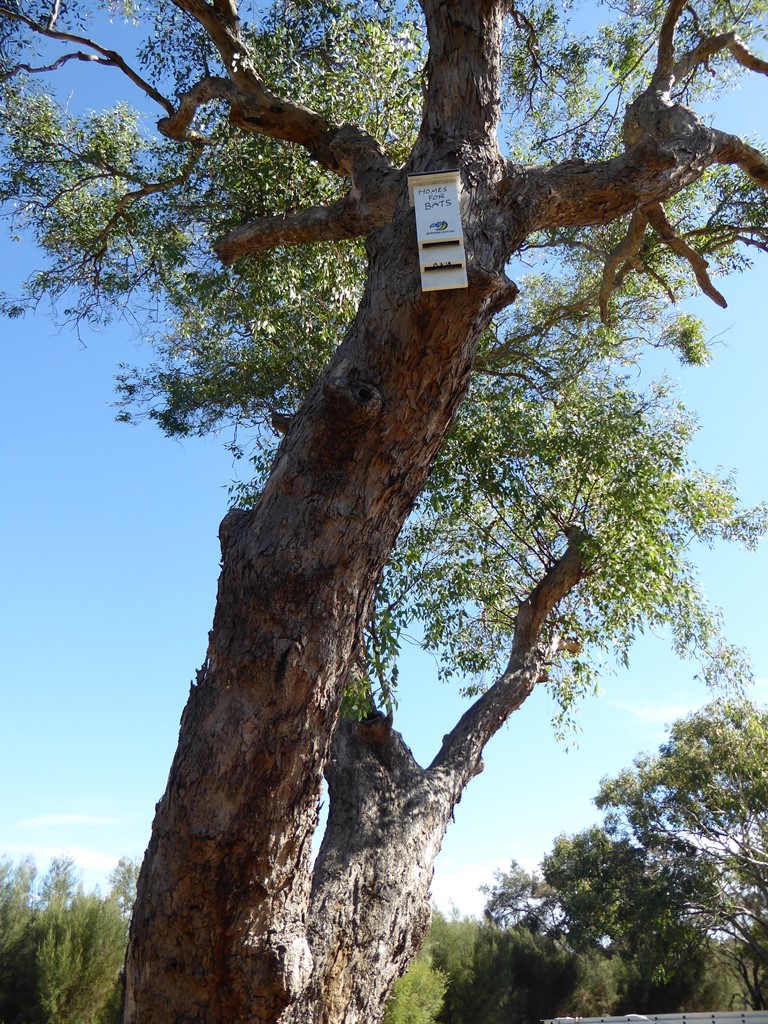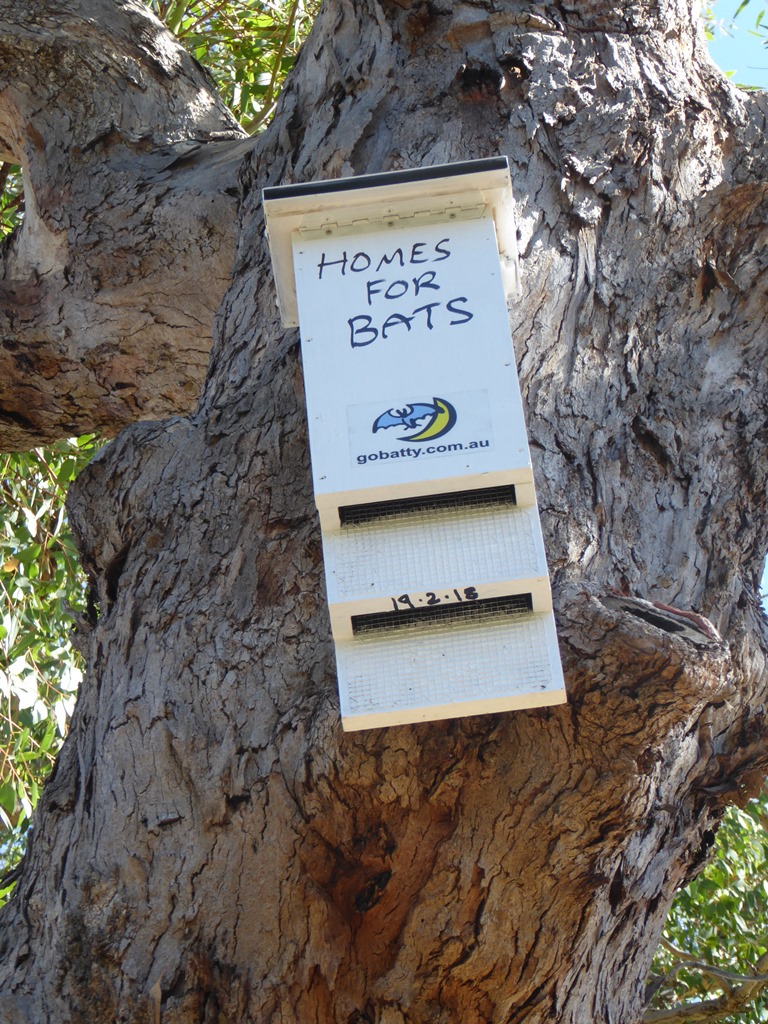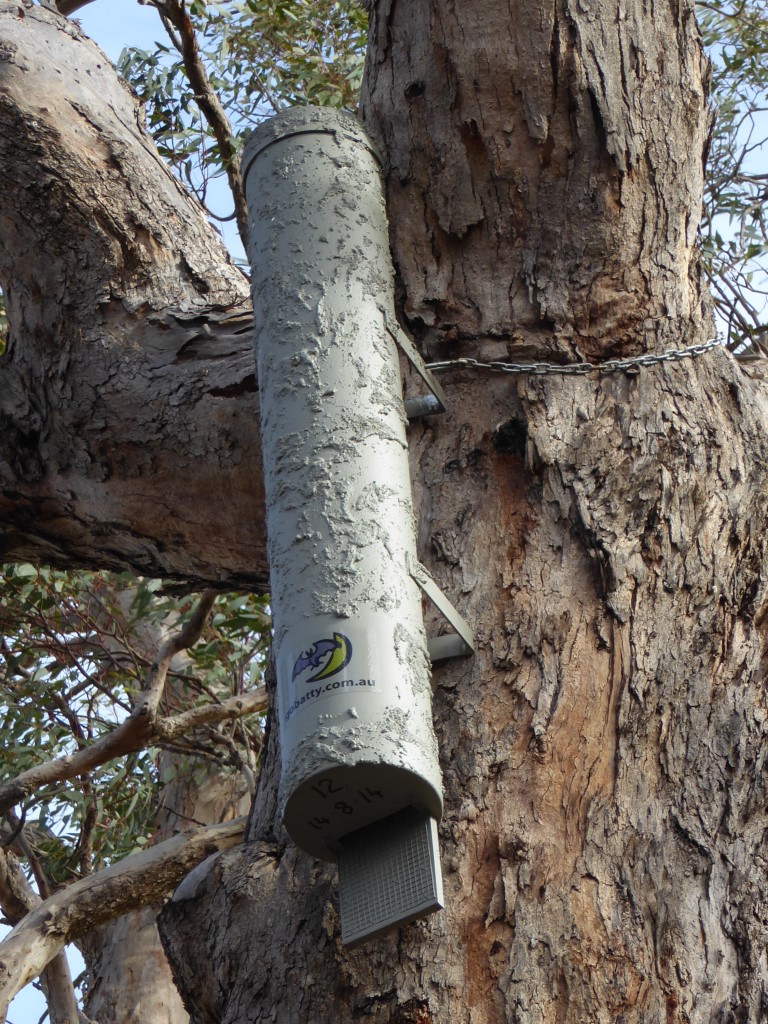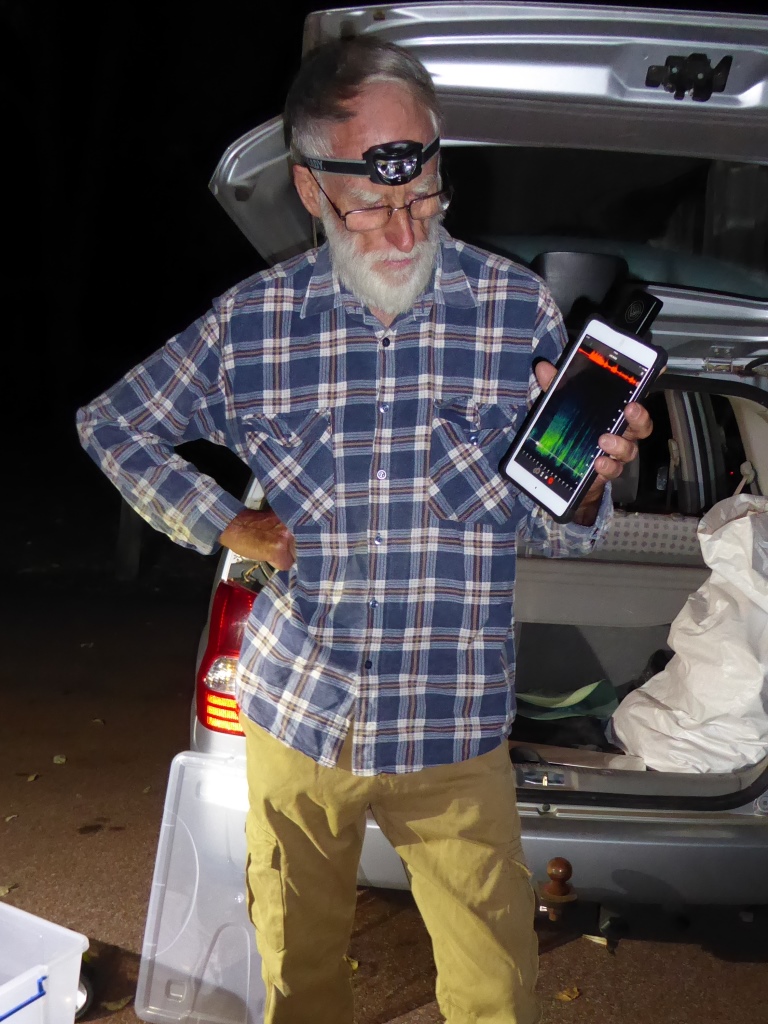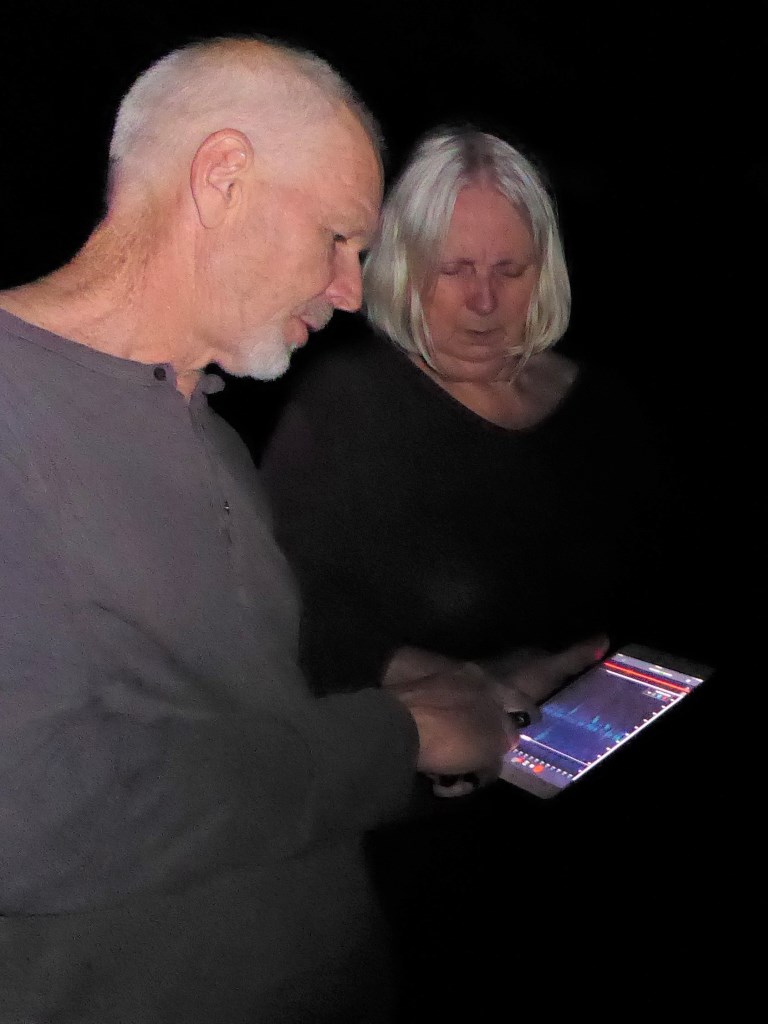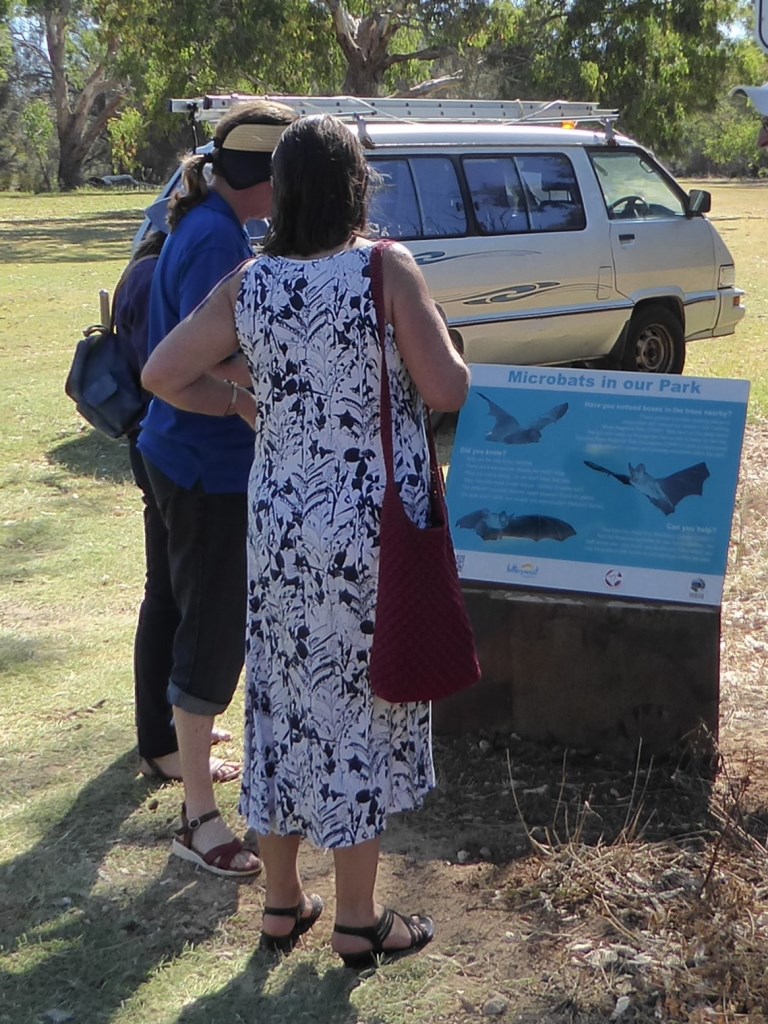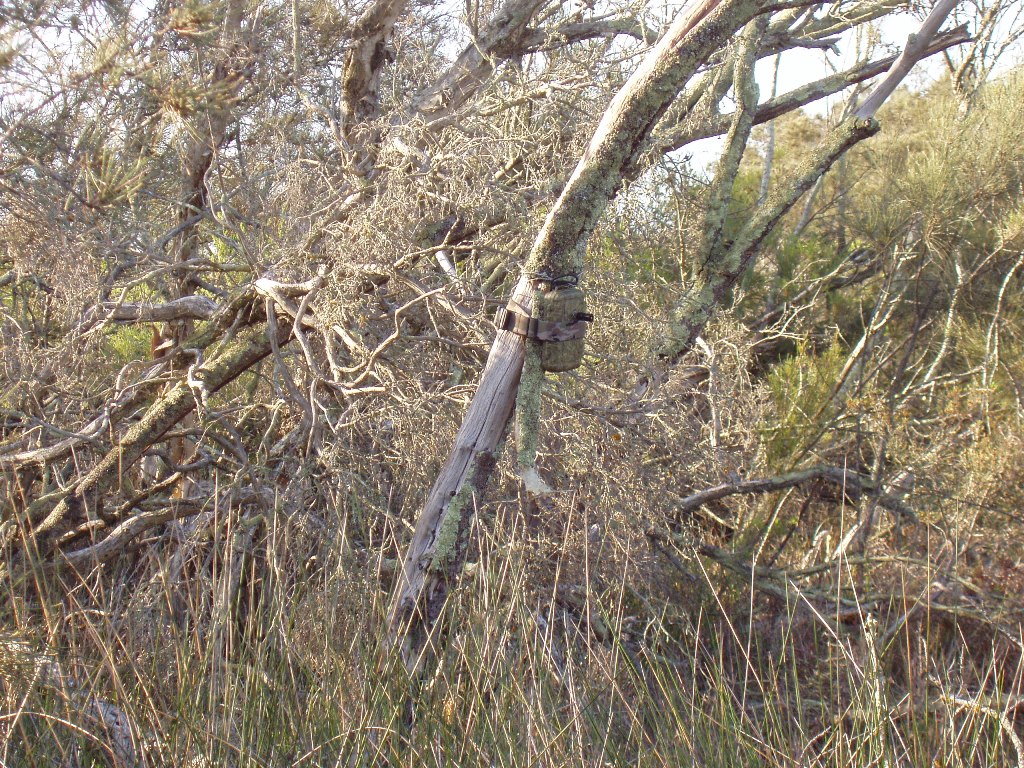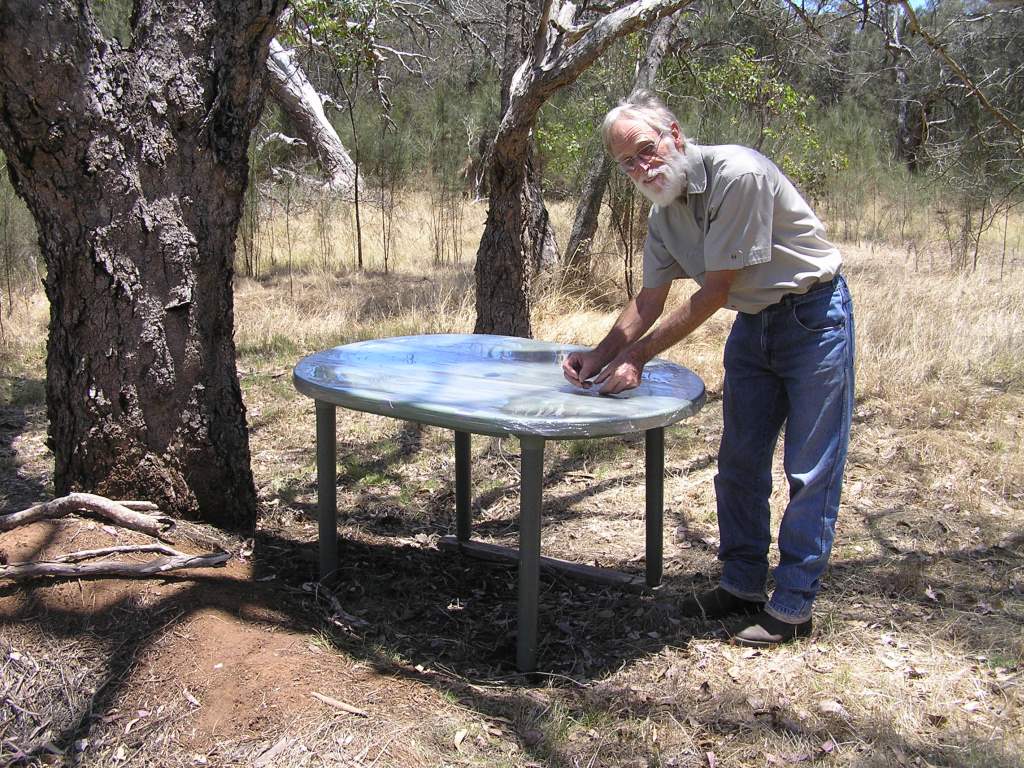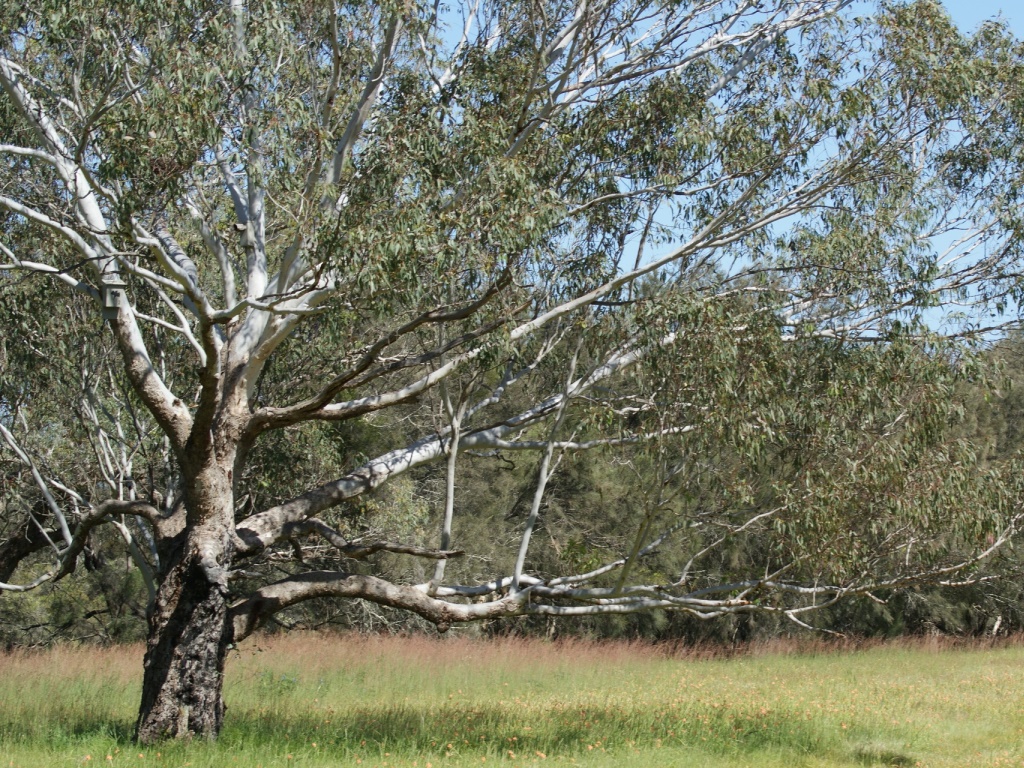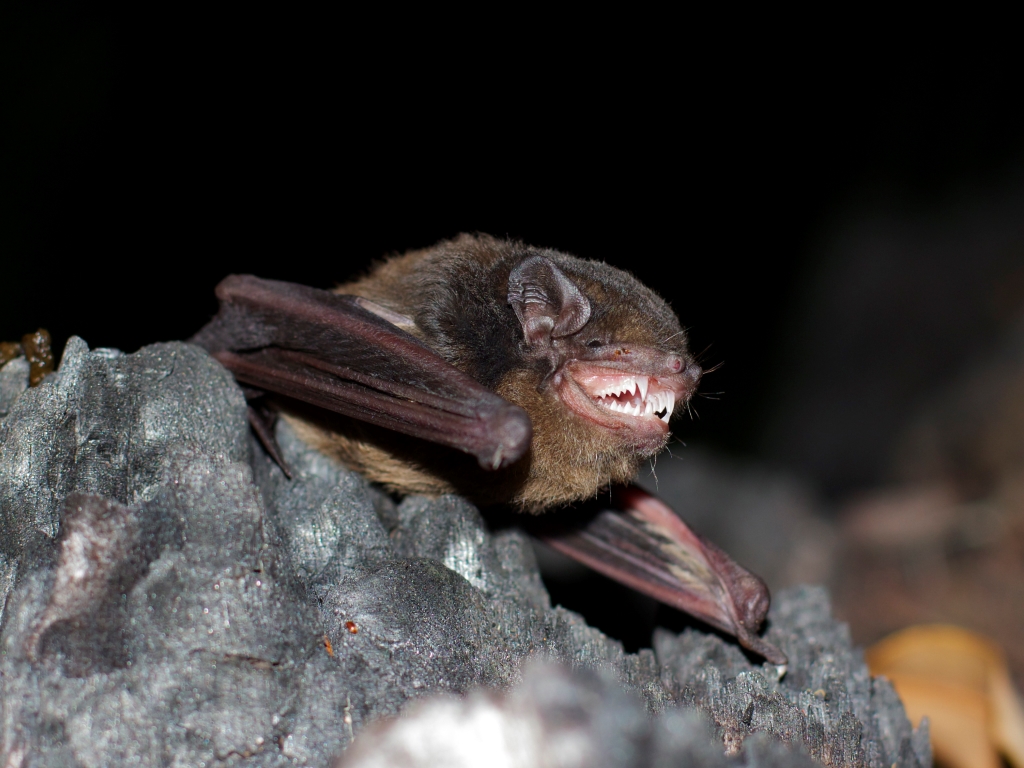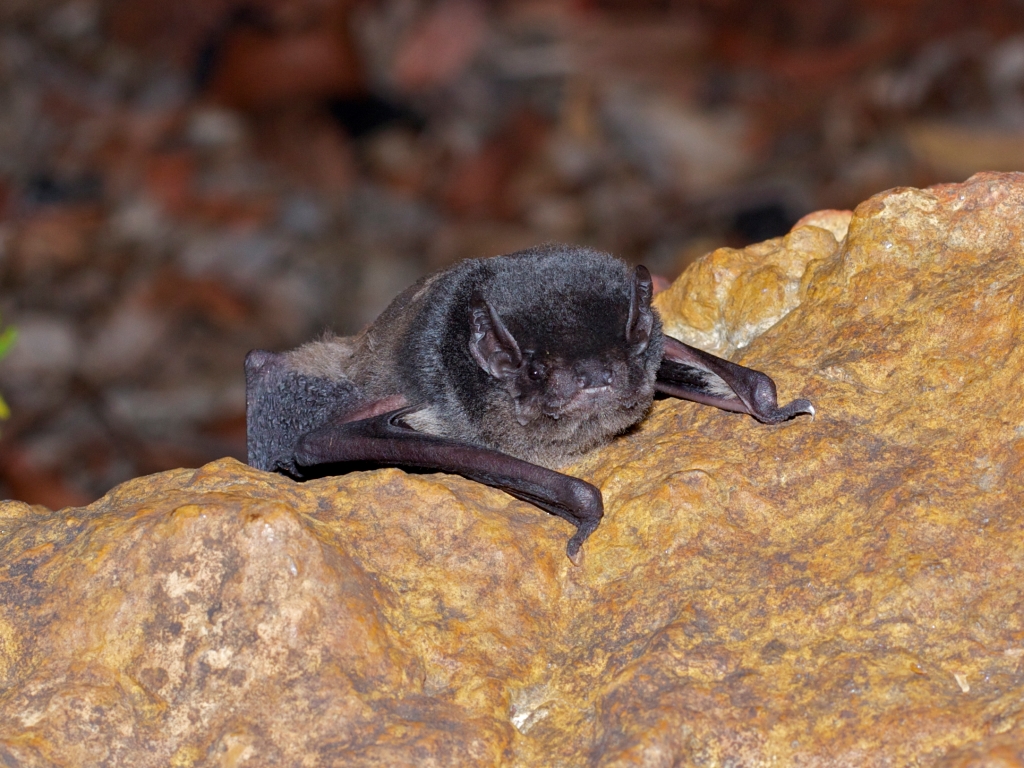Bats in the Canning River Regional Park
CRRP is a reserve spanning a section of the Canning River, within the City of Canning. It is jointly managed by the City of Canning and DBCA, having areas for both conservation and recreation. It is blessed with a system of dual paths (pedestrian and bicyclists) and is very popular with walkers.
In the middle of the reserve is a pedestrian enabled weir which separates the river into upstream fresh and downstream salt water. Near the west (Ferndale) side of the weir, about 250m from CREEC, bat boxes were installed between about 2008, and 2017.
The flooded gums lining the river have hollows which would provide roosts for bats, however to easily observe the bats, bat boxes are useful. To do so, look up the narrow slot beneath the box.
Scientists doing diet studies would catch then bag bats, then identify the insect by looking for undigested insect fragments in the poo. We took advantage of these boxes to collect their poo on a table underneath a box, then analyse the poo using DNA methods to identify the bat species and the insects which they eat. There was minimum disturbance to the bats.
- Beginning in 2016, a Lotterywest grant provided funds for this project. Project objectives are:
- Identify the species of bats occupying the bat boxes, and other bats in the vicinity
- Identify the diet of bats using the bat boxes
- Educate people about bats
- Remove feral European honeybee colonies from CRRP
- Assess and refurbish the existing bat boxes and install new boxes
Bats (Chiroptera) are broadly divided into the large fruit eating megabats, and the much smaller insect eating microbats. Megabats roost hanging upside down in trees and microbats (hereafter called bats) naturally roost in tree hollows, under bark or in caves. Bats may use the built environment or, being so small, in such things as a folded umbrella or clothing.
This Bat Project’s aim is education. People deny there are bats in Perth, thinking perhaps of the noticeable megabats from other parts of Australia. With microbats, it is said that you don’t hear or see them, so being “invisible” to the general population. Bats, while they can see, use echolocation for navigation and to discriminate prey. They emit a sound which bounces off objects and returns to the bat, to be picked up by large ears or nose folds. Nine bat species are known in the Southwest. We recorded 3 on the bat recorders in CRRP. One of them, the White-striped freetail bat, can be heard by people with good hearing as a tic..tic..tic. It is fast flying and typically flies above the tree canopy. Adults weigh about 38g. The other 2 bat species recorded weigh about 13g. For comparison, an adult house mouse weighs about 20g. There may be other bat species in CRRP, however their calls hard to detect (the quiet bats).
January 2021: CRRPV’s Microbat Project, funded by Lotterywest, has been completed. The uncorrected proof of Joanna Burgar’s report can be seen here: Effectiveness of bat boxes for bat conservation and insect suppression
This project was made possible through funding from Lotterywest



